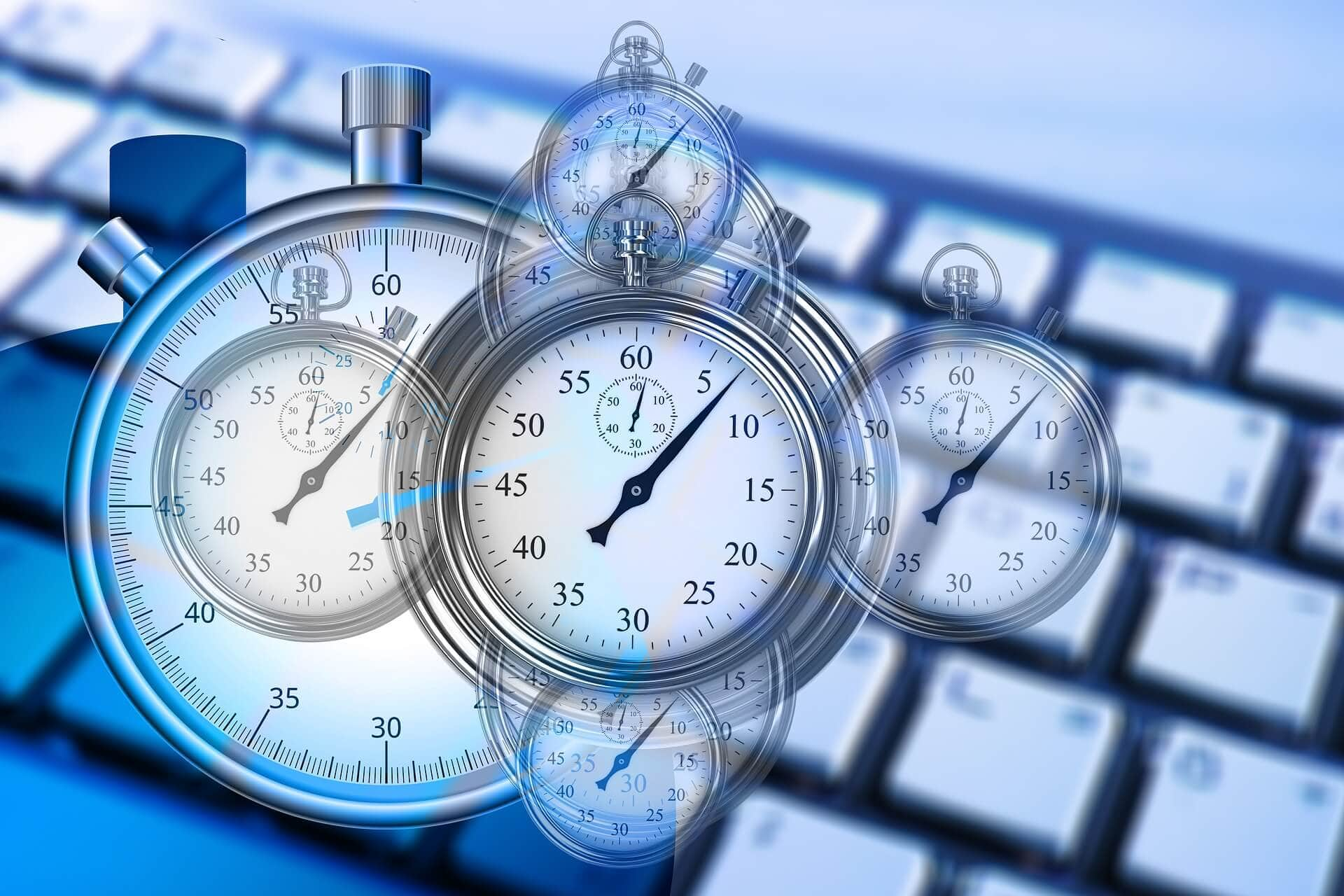Working with a slow computer can be frustrating, gradually over time or suddenly. Even if you’re relatively diligent with maintaining your laptop or PC, it’s surprising how quickly things slow down.
Handling several programs takes a lot of processing power, impacting performance and speed. The amount of processing power required to run many programs impacts performance and speed. There are two ways to address this: reduce the number of open apps and boost your computer’s RAM and processing capability
You can take several steps to give it a boost in the performance department. With simple de-cluttering and a few more technical operations, even the slowest computer can return to its old self. So if you’re wondering, “Why is my laptop so slow?” this post is for you! Don’t throw out your slow laptop just yet. Instead, try these free fixes to make your computer faster!
Find out which programs are making your PC sluggish
You frequently utilize software that is memory and processing intensive. It is best to assess your memory allowance and daily usage and compare that data to the memory requirements of those programs you use most frequently if you rely on software that consumes a lot of memory and processing power.
Also Read- Top 9 gaming laptops under $1500 for 2023
You should also know that High-level apps that launch automatically and run in the background occasionally hog your memory, as may a program you opened but forgot to close.
Check your internet browser and connection
Check to see if you have the most recent version of your web browser if you notice that your computer is operating slowly. There will be an About selection to show you the version number, albeit the location of this information differs by the browser. Enable the option to install updated versions if it exists automatically. Too many extensions and add-ons might make your online browsing sluggish. Again, depending on your browser, you should be able to delete any unwanted add-ons or extensions from a menu labeled Add-ons or Extensions.
Defragmenting your hard drive
In contrast to a solid state drive (SSD), a hard disk drive (HDD) stores data in discrete chunks across the Disk. As a result of use and time, relevant data can become dispersed across the entire Disk.
When you start a software or app, the system needs more time to locate and back together each piece of data. By reassembling linked data fragments and defragmenting (or “defragging”), your HDD can accelerate this procedure and cut down on time it takes the system to locate the required data.
How to defragment your Hard drive
- Select Windows or the Start button.
- Select Control Panel, then System and Security.
- Defragment your hard drive by selecting it under Administrative Tools.
You can choose to have the process run regularly or click Analyze Disk to see if it needs to run immediately.
Stop all programs that run during booting or startup
Similar to programs that run in the tray, other programs that start up automatically on your computer can slow it down. Others might not be necessary, but some—like antivirus software—you may want to run. Here’s how to control programs that run after booting
Use Ctrl-Shift-Escape or the Task Manager option
To launch, use Ctrl-Shift-Escape or the Task Manager option from the context menu on the taskbar. In addition, you may inspect each thing that executes at startup, along with its impact, by going to the Startup tab.
The list can be sorted by clicking each header to see which programs utilize a resource most. If something needs to be closed, consider doing so by first shutting the application itself. Then, return to the Task Manager page, right-click the application, and select End task if it won’t shut down.
Decide which don’t need to start automatically by going through them
If you can disable any of the high-impact ones, the performance of this process will be significantly enhanced. But remember that some of these applications are necessary for Windows to function. So, for instance, it’s generally better to ignore the ones where Microsoft is named as the publisher. Then, if you need more time, skip it or conduct a Google search to learn more.
Disable the apps that launch on startups that are not necessary
Right-click and select Disable to disable. Remember that all you are doing is preventing the program from starting.
Remove applications you don’t utilize
We frequently install large apps without realizing the amount of space they consume. But, of course, you can uninstall any programs you don’t use if that is the case. On the other hand, if a program is incredibly massive and you occasionally use it, it’s worth reinstalling it whenever you need it.
Uninstalling can be done this way
- Go to Control Panel,
- Click on programs
- Click on Programs and Features to uninstall the particular program.
Examine the programs and determine which, if any, you don’t require. Use a search engine to learn more about a specific program if you need clarification. To assist you in separating the excellent from the bad, you can also employ a tool like the aptly named PC Decrapifier.
Upgrade your storage with a solid-state drive
The stuff you use daily, such as your operating system, programs, documents, images, and music, is kept on your computer’s storage disk.
Consider this to be the long-term memory of your machine. It is a location to store files you wish to maintain, even while your computer is off, similar to a traditional file cabinet.
The performance of your computer will suffer if your storage disk becomes outdated or runs out of space. It’s also important to know that HDDs typically operate at maximum speed when they are approximately 90% full. Therefore, checking your space usage and finding that you’re over 90% is dragging down the process. SSDs slow down gradually as they fill up, so keeping up is essential. An SSD should be filled to at most 75% of its maximum capacity.
Add more memory (RAM)
Your RAM serves as short-term storage, temporarily storing current data so that it may be accessed quickly, in contrast to the long-term storage of your SSD or hard drive.
You use memory every time you do one of the following things:
- Navigate your mouse.
- Open tabs in your internet browser and switch between them.
- Write an email
- Establish a spreadsheet.
- Watch a video, play a game, or listen to music.
- Edit images and videos.
Consider it a desktop area where you have organized the documents, notes, and tools you now utilize.
Update Your Windows
You can always check if you still need an update. First, select Settings or the settings icon from Start. Then choose Windows Updates under Updates & Security.
This is accurate, and it can also improve performance. Windows will notify you when an error occurs automatically. Likewise, when an update is available, Windows will notify you automatically. Just watch that you don’t put it off any longer. In addition to updating your Windows operating system, you must also update your drivers and applications. Once more, both security and performance will benefit from this. Again, a short online search should reveal which version you should use if you need an update.
Delete all unused files
Your computer becomes crowded, much like your wardrobes and drawers. Although you can’t see it, you know it’s there and might hurt your computer’s performance. This is particularly true if you frequently work with multiple huge files, such as high-resolution photos, audio files, and films.
Make it a practice to regularly delete files and folders, then empty the recycle bin to free up space. Doing this makes you more likely to remember what is in the files and folders and less worried about accidentally destroying crucial information.
Power plan options
Basic choices include how long the screen remains on when you aren’t using it and how long it takes the computer to enter sleep mode. These won’t impact the speed of your computer, but if you select Change advanced power settings, you can make more changes that will.

